Transforming Your Kitchen: A Comprehensive Guide to Renovation Ideas
The kitchen. It’s more than just a place to cook; it’s the heart of the home. It’s where we gather with family, share meals with friends, and create memories that last a lifetime. But what happens when your kitchen no longer reflects your style, meets your needs, or simply feels outdated? That’s when a kitchen renovation becomes a necessity, a chance to breathe new life into your home’s central hub.
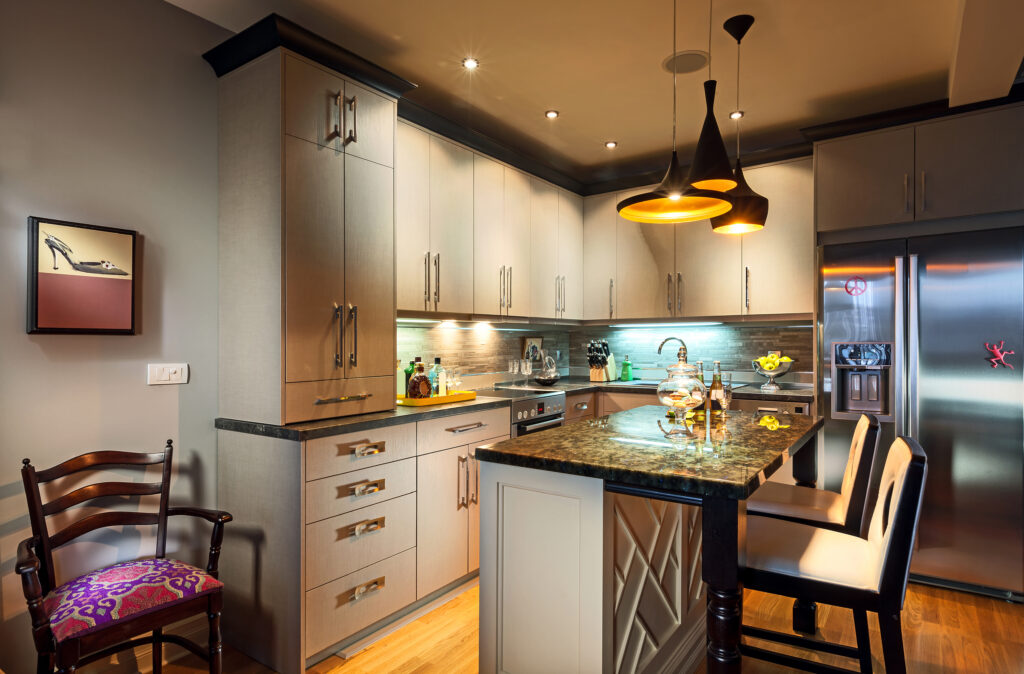
Embarking on a kitchen renovation project can feel daunting. From budgeting and planning to choosing materials and hiring contractors, there are countless decisions to make. However, with careful planning and a clear vision, you can transform your current kitchen into the kitchen of your dreams. This comprehensive guide will explore a wide range of kitchen renovation ideas to inspire you, catering to various styles, budgets, and functional requirements. We’ll delve into everything from minor cosmetic updates to complete kitchen overhauls, providing you with the knowledge and inspiration you need to create a space you’ll love for years to come.
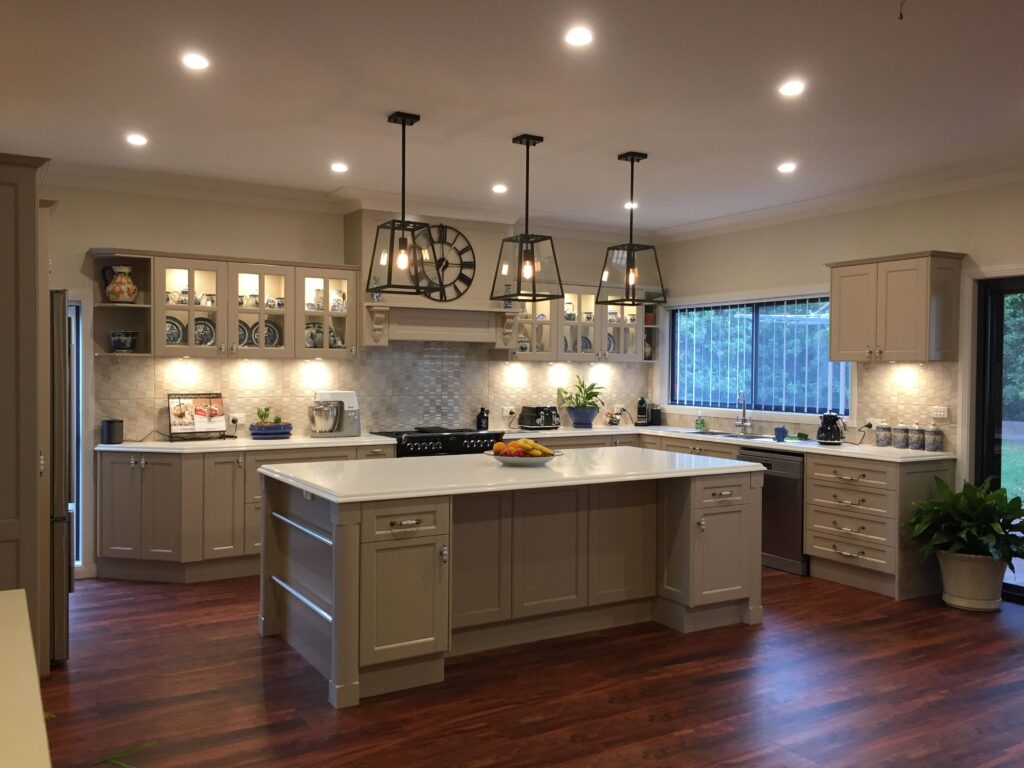
Understanding Your Needs and Defining Your Style
Before diving into specific design ideas, it’s crucial to take a step back and analyze your current kitchen. Ask yourself these important questions:
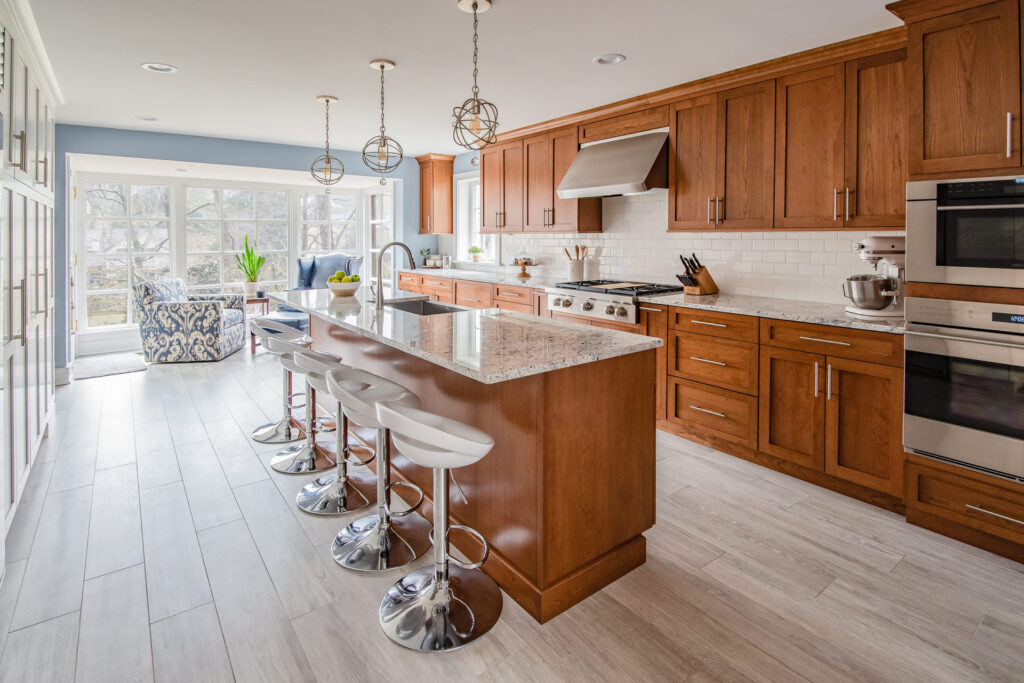
- What do you dislike about your current kitchen? Is it the layout, the outdated appliances, the lack of storage, or simply the overall aesthetic?
- What are your must-haves in a new kitchen? Do you need more counter space, a larger island, a walk-in pantry, or a dedicated coffee bar?
- How do you use your kitchen? Are you a passionate cook who needs a chef-inspired space? Or is your kitchen primarily used for casual meals and entertaining?
- What’s your budget? Establishing a realistic budget is essential for guiding your design choices and preventing overspending.
- What’s your preferred style? Are you drawn to modern minimalism, rustic farmhouse charm, classic traditional elegance, or something in between?
Answering these questions will provide you with a solid foundation for your renovation project. Consider creating a mood board with images of kitchens that inspire you. This will help you visualize your desired aesthetic and communicate your vision to designers and contractors.
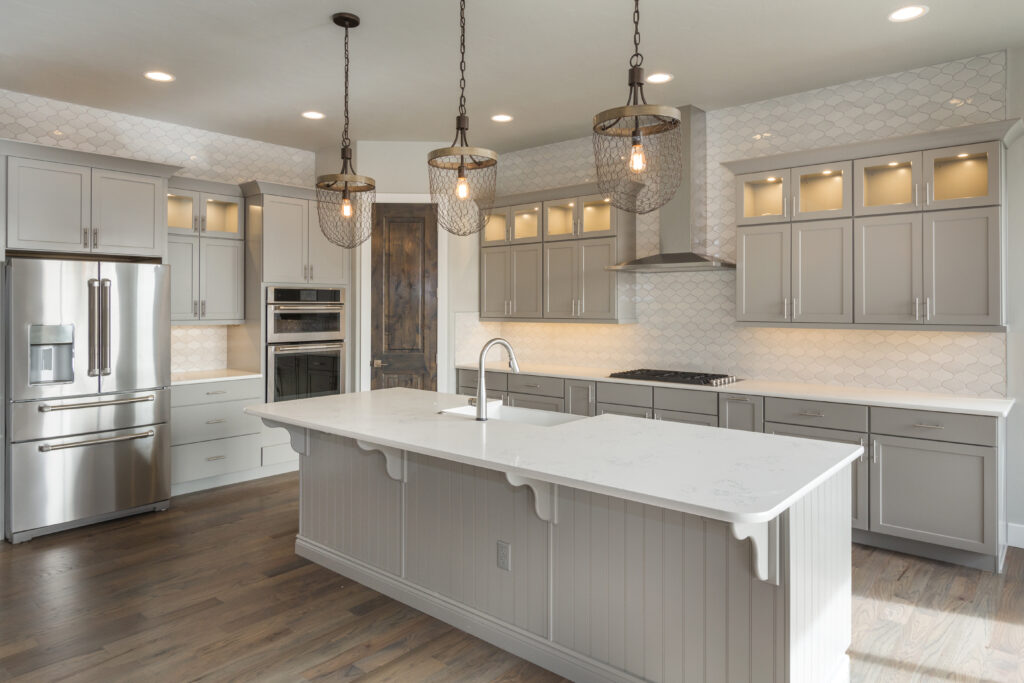
Exploring Kitchen Renovation Ideas: From Cosmetic Updates to Complete Overhauls
The scope of your kitchen renovation can vary greatly depending on your budget, needs, and preferences. Here’s a breakdown of different renovation options, ranging from minor cosmetic updates to complete kitchen overhauls:
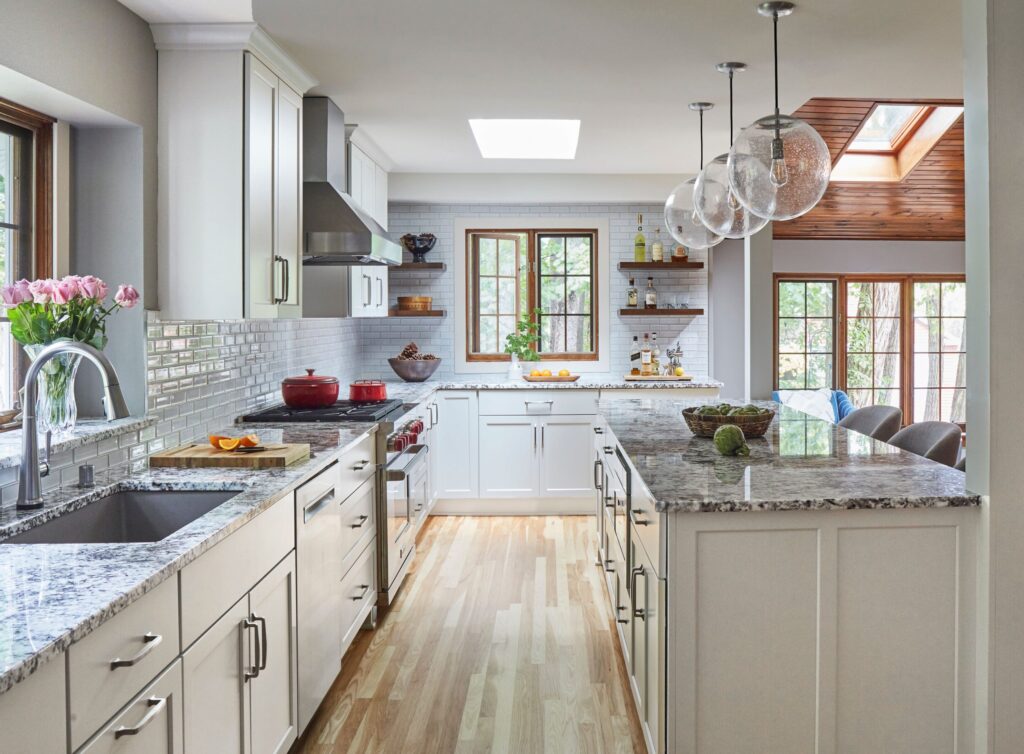
Cosmetic Updates: A Budget-Friendly Refresh
If your kitchen is structurally sound but simply needs a facelift, cosmetic updates can be a cost-effective way to refresh the space. These updates typically involve:

- Painting the walls and cabinets: A fresh coat of paint can instantly transform the look and feel of your kitchen. Choose colors that reflect your style and complement your existing décor. Consider painting cabinets a different color than the walls for added visual interest.
- Replacing cabinet hardware: New knobs and pulls can make a surprisingly big difference. Opt for stylish hardware that complements your overall design aesthetic.
- Updating the backsplash: A new backsplash can add personality and visual appeal to your kitchen. Consider using tile, glass, or even peel-and-stick options for a budget-friendly update.
- Installing new lighting fixtures: Updated lighting can improve both the functionality and aesthetics of your kitchen. Consider adding under-cabinet lighting, pendant lights over the island, or a stylish chandelier.
- Adding new accessories: Simple accessories like new curtains, rugs, and countertop organizers can help to refresh the space without breaking the bank.
Minor Renovations: Enhancing Functionality and Style
Minor renovations involve more significant changes than cosmetic updates, but they are still less extensive than a complete kitchen overhaul. These renovations may include:
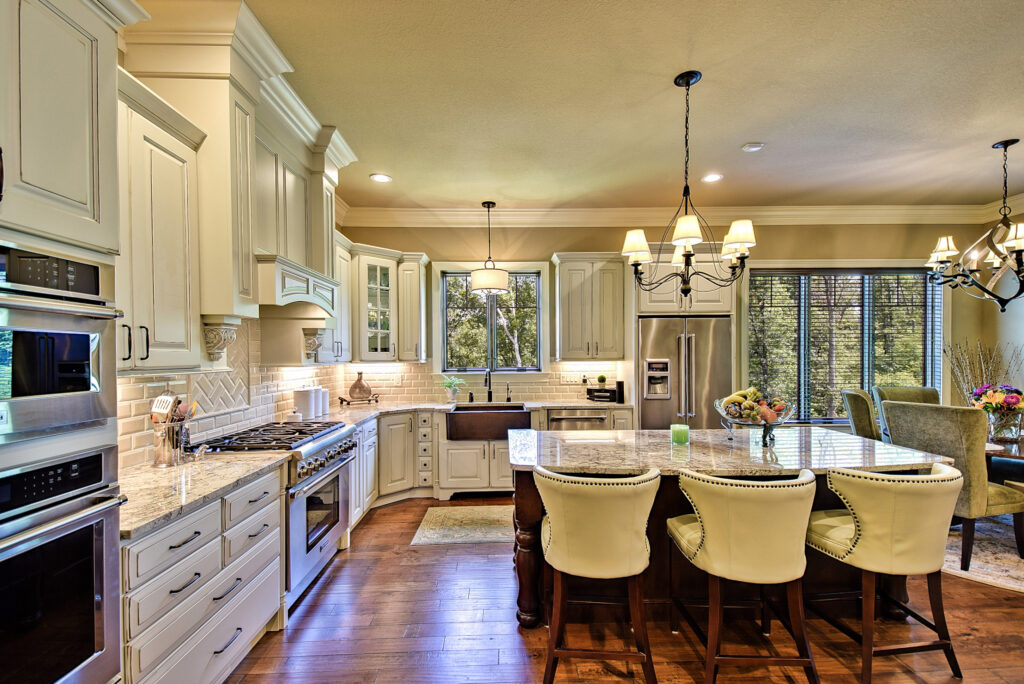
- Replacing countertops: New countertops can dramatically improve the look and functionality of your kitchen. Consider options like granite, quartz, marble, or butcher block.
- Replacing the sink and faucet: A new sink and faucet can add style and convenience to your kitchen. Choose a sink that suits your needs and a faucet that complements your overall design.
- Adding open shelving: Open shelving can provide additional storage and display space while adding a touch of style to your kitchen.
- Installing a new kitchen island: If space allows, adding a kitchen island can provide additional counter space, storage, and seating.
- Repainting or refacing cabinets: Refacing cabinets involves replacing the doors and drawer fronts while keeping the existing cabinet boxes. This can be a more affordable alternative to replacing the entire cabinetry.
Major Renovations: A Complete Transformation
Major renovations involve a complete overhaul of your kitchen, often including significant structural changes. These renovations are the most expensive and time-consuming, but they offer the opportunity to create a completely new kitchen that perfectly meets your needs and reflects your style. Major renovations may include:
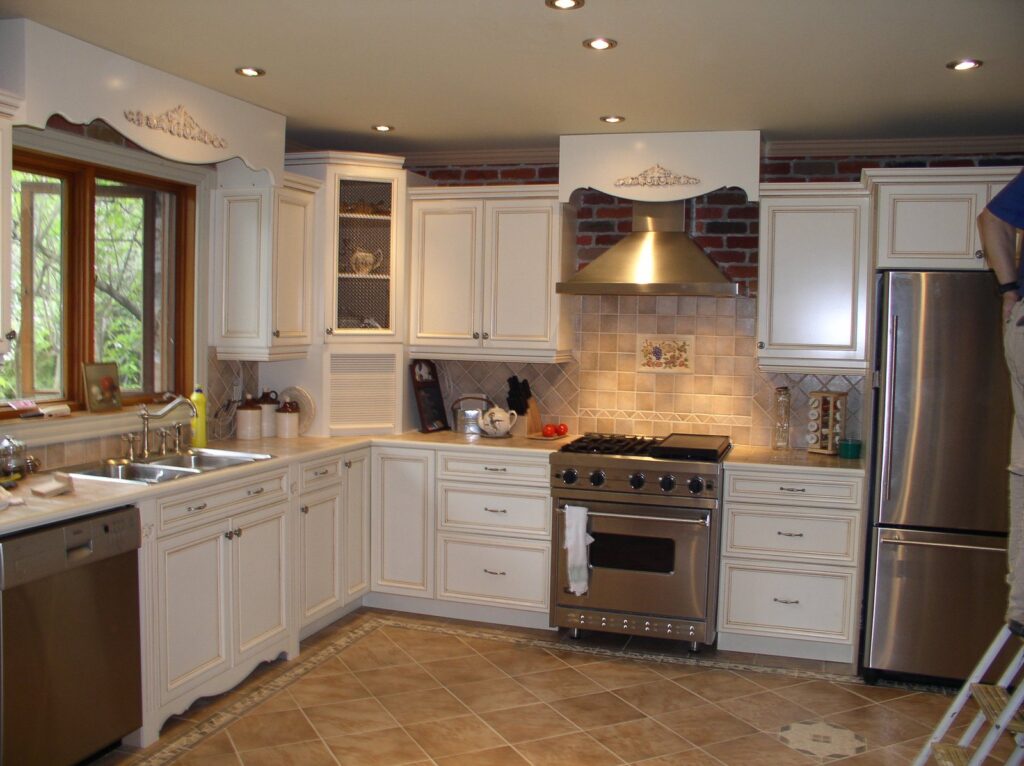
- Changing the layout: Reconfiguring the layout of your kitchen can improve its functionality and flow. This may involve moving walls, relocating appliances, or creating an open-concept design.
- Replacing all appliances: Upgrading to new, energy-efficient appliances can improve the performance and aesthetics of your kitchen.
- Installing new cabinetry: Replacing all of your cabinetry allows you to completely customize the storage and style of your kitchen.
- Adding or expanding windows: Adding or expanding windows can bring more natural light into your kitchen, creating a brighter and more inviting space.
- Installing new flooring: New flooring can dramatically improve the look and feel of your kitchen. Consider options like hardwood, tile, or laminate.
Inspiration by Style: Kitchen Reno Ideas for Every Taste
No matter your taste, there’s a kitchen renovation style that’s perfect for you. Let’s explore some popular kitchen design styles and the key elements that define them:
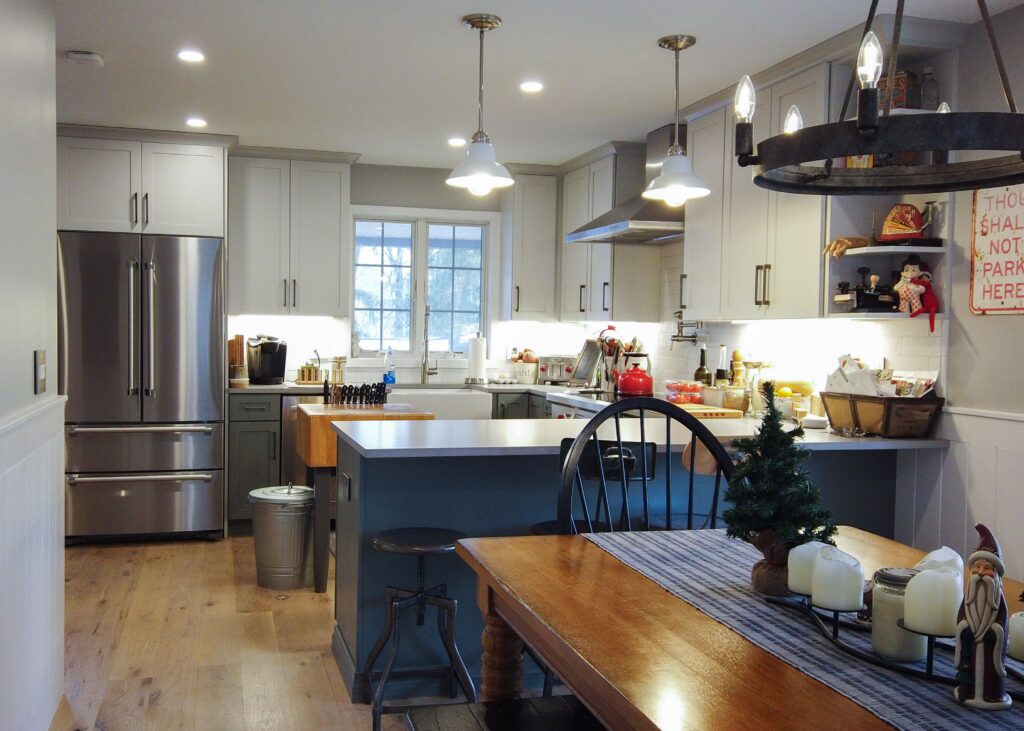
Modern Kitchens: Sleek and Streamlined
Modern kitchens are characterized by clean lines, minimalist design, and a focus on functionality. Key elements of modern kitchens include:
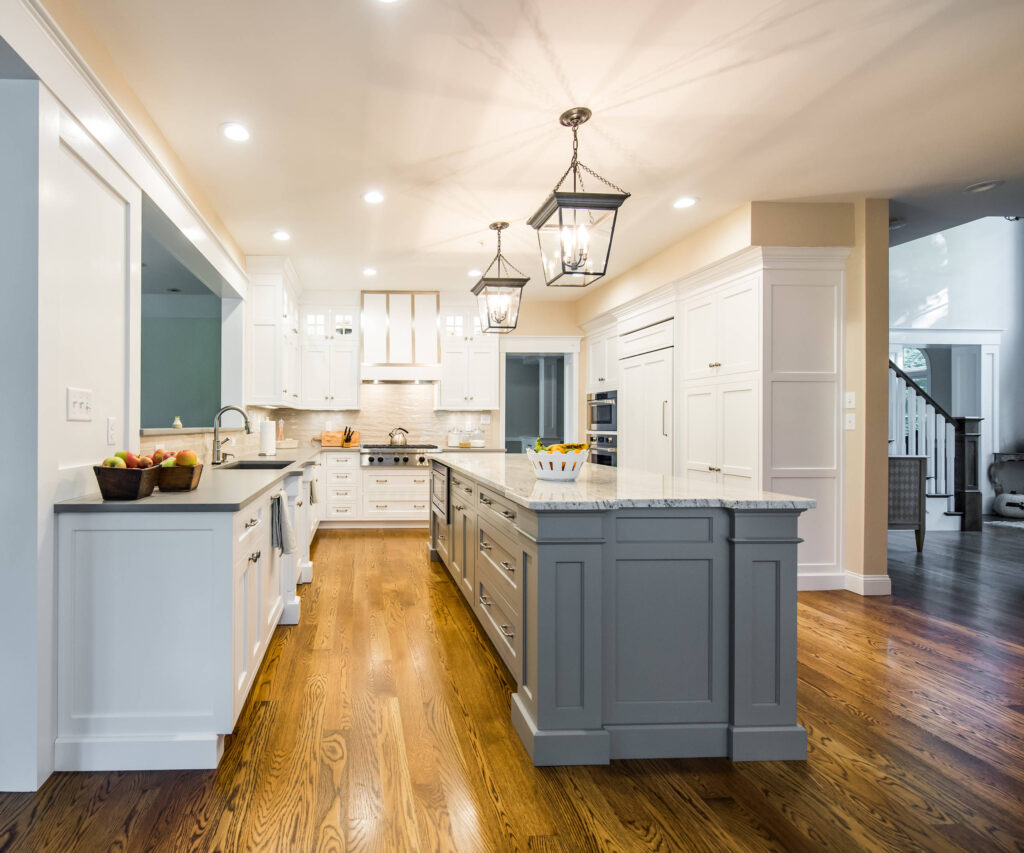
- Flat-panel cabinets: Sleek, frameless cabinets with minimal hardware are a hallmark of modern kitchens.
- Stainless steel appliances: Stainless steel appliances complement the clean lines and minimalist aesthetic.
- Quartz countertops: Quartz countertops are durable, easy to maintain, and available in a wide range of colors and patterns.
- Geometric backsplash: A geometric backsplash can add visual interest without overwhelming the minimalist design.
- Recessed lighting: Recessed lighting provides ample illumination without detracting from the clean lines of the space.
Traditional Kitchens: Timeless Elegance
Traditional kitchens are characterized by classic design elements, ornate details, and a sense of timeless elegance. Key elements of traditional kitchens include:
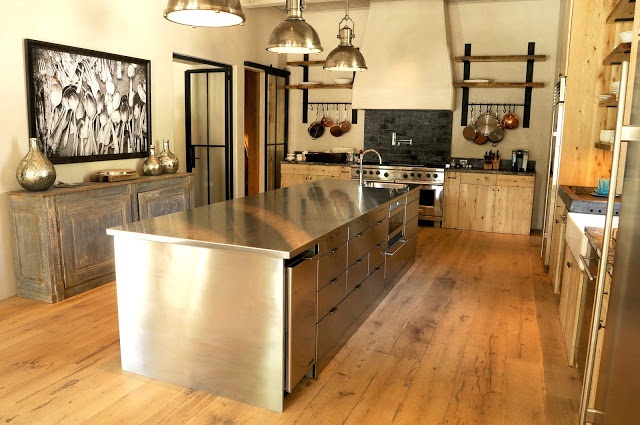
- Raised-panel cabinets: Raised-panel cabinets with decorative molding are a defining feature of traditional kitchens.
- Wood countertops: Wood countertops, such as butcher block or hardwood, add warmth and character to the space.
- Farmhouse sink: A farmhouse sink is a classic element that adds a touch of rustic charm to traditional kitchens.
- Intricate backsplash: An intricate backsplash with decorative tiles or mosaics can add visual interest and elegance.
- Chandelier: A chandelier can add a touch of grandeur and sophistication to the space.
Farmhouse Kitchens: Rustic Charm and Comfort
Farmhouse kitchens are characterized by rustic charm, comfortable atmosphere, and a focus on natural materials. Key elements of farmhouse kitchens include:
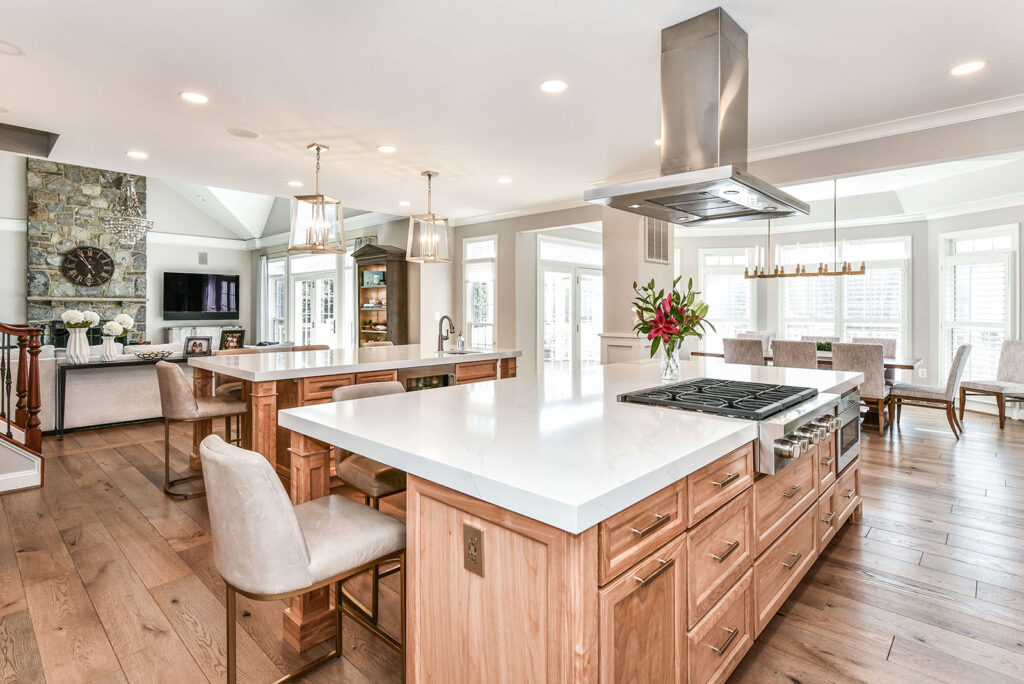
- Shaker cabinets: Shaker cabinets are a classic and versatile choice that complements the farmhouse aesthetic.
- Butcher block countertops: Butcher block countertops add warmth and character to the space.
- Farmhouse sink: A farmhouse sink is a quintessential element of farmhouse kitchens.
- Open shelving: Open shelving allows you to display your favorite dishes and accessories while adding a touch of rustic charm.
- Exposed beams: Exposed beams can add character and architectural interest to the space.
Contemporary Kitchens: A Balance of Style and Functionality
Contemporary kitchens blend modern and traditional elements to create a space that is both stylish and functional. Key elements of contemporary kitchens include:
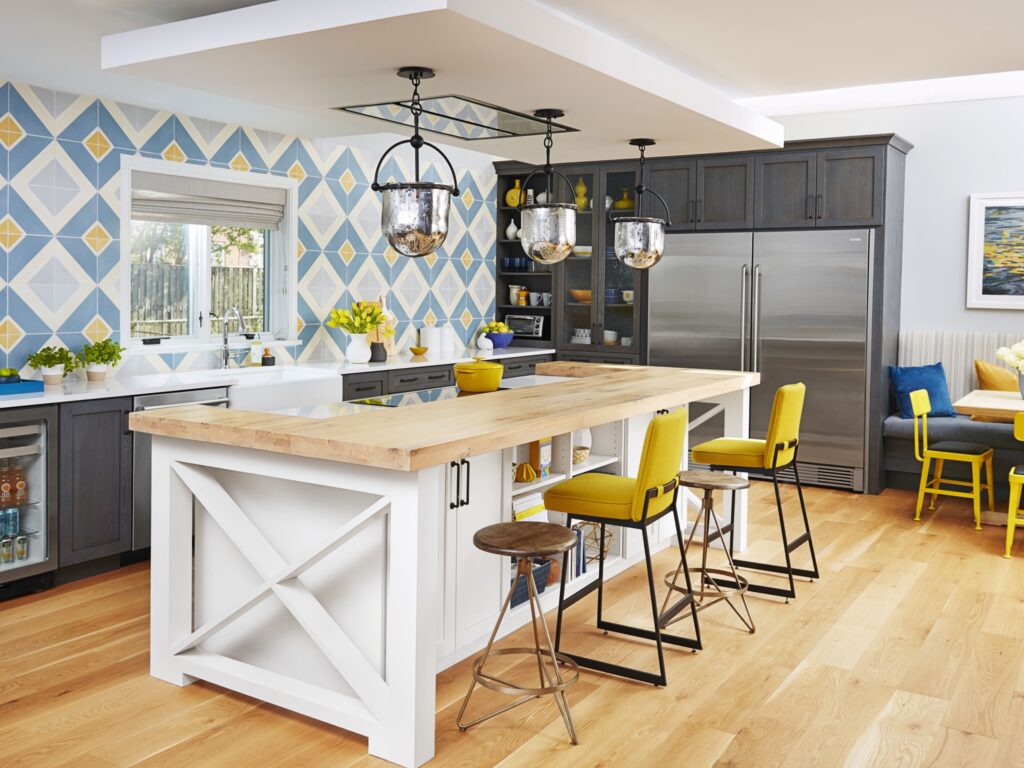
- A mix of cabinet styles: Contemporary kitchens often incorporate a mix of cabinet styles, such as flat-panel cabinets on the upper cabinets and shaker cabinets on the lower cabinets.
- Granite or quartz countertops: Granite or quartz countertops offer durability and style.
- Tile or glass backsplash: A tile or glass backsplash can add visual interest and personality to the space.
- Pendant lighting: Pendant lighting over the island or breakfast bar can add style and ambiance.
- Stainless steel appliances: Stainless steel appliances are a popular choice for contemporary kitchens.
Beyond the Basics: Unique Kitchen Reno Ideas
Looking for something a little different? Here are some unique kitchen renovation ideas to consider:
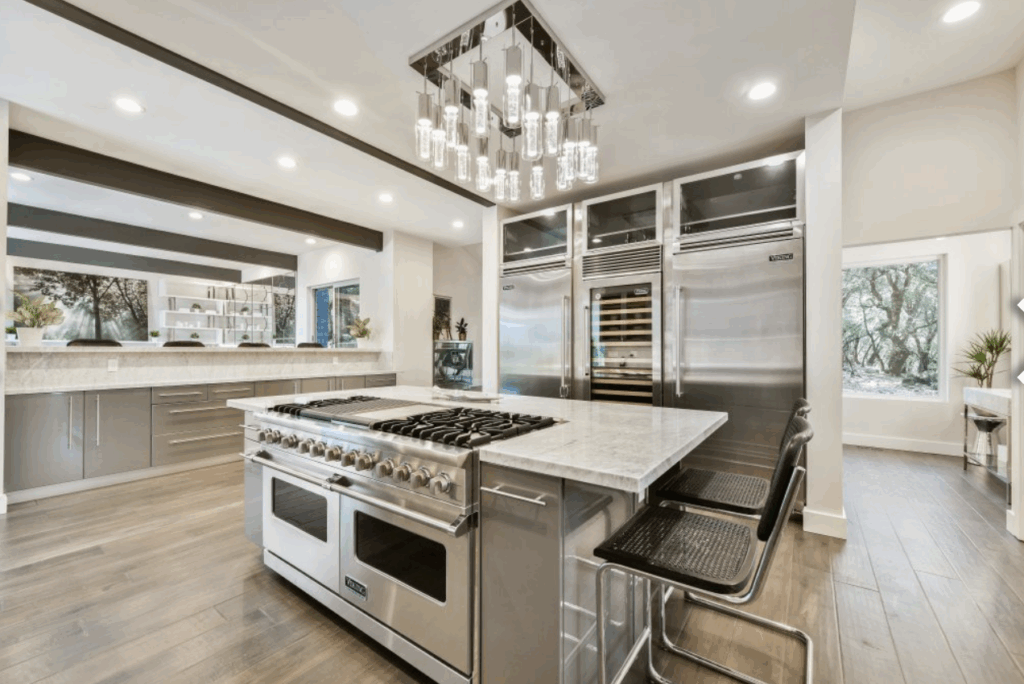
- Hidden Pantry: Integrate a walk-in pantry seamlessly into your kitchen design for a clutter-free look.
- Smart Kitchen Technology: Incorporate smart appliances, lighting, and voice control systems for a modern and convenient kitchen experience. Imagine controlling your oven with your voice or having your refrigerator automatically order groceries when you’re running low.
- Indoor Herb Garden: Create a dedicated space for growing herbs indoors, adding freshness and flavor to your cooking.
- Coffee Bar Nook: Design a dedicated coffee bar area with a built-in coffee maker, storage for coffee beans and mugs, and a small sink for easy cleanup.
- Statement Lighting: Make a bold statement with unique and eye-catching lighting fixtures that reflect your personality.
- Mix and Match Materials: Don’t be afraid to mix and match different materials, such as wood, metal, and stone, to create a unique and personalized look.
Planning Your Kitchen Renovation: A Step-by-Step Guide
Once you have a clear vision for your new kitchen, it’s time to start planning your renovation project. Here’s a step-by-step guide to help you stay organized and on track:
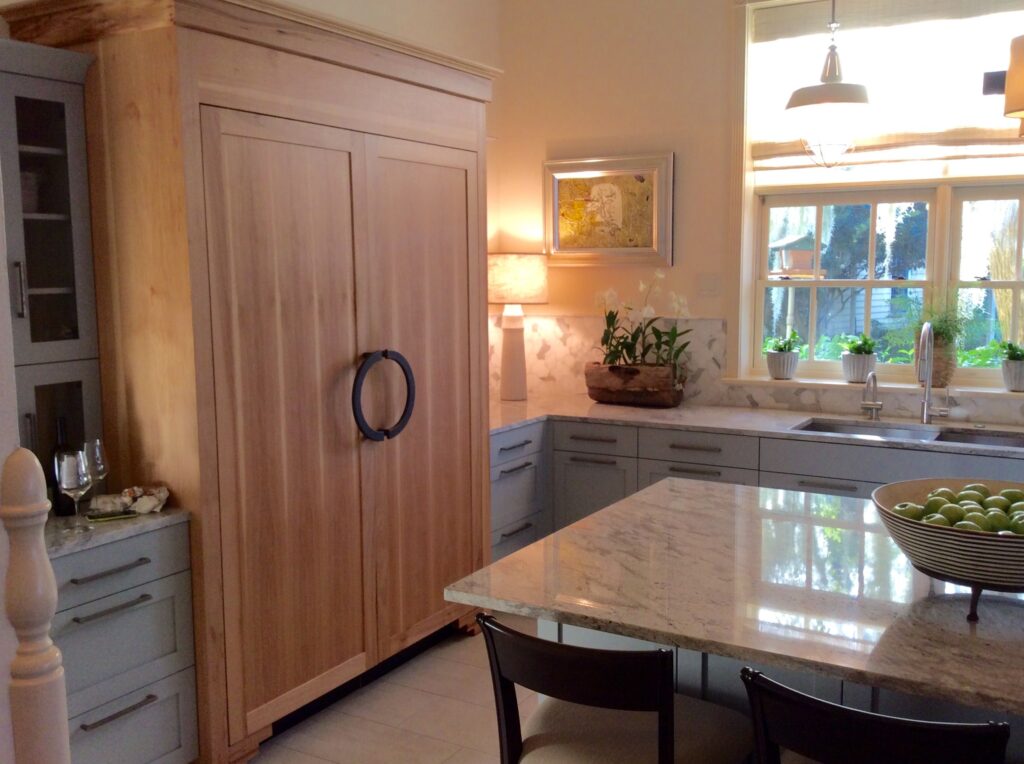
- Set a Budget: Determine how much you’re willing to spend on your kitchen renovation. Be sure to factor in unexpected costs and create a contingency fund.
- Hire a Designer or Contractor: Consider hiring a kitchen designer or contractor to help you plan and execute your renovation project. They can provide valuable expertise and guidance, and ensure that your project is completed to your satisfaction.
- Create a Timeline: Develop a realistic timeline for your renovation project. Factor in the time required for design, demolition, construction, and installation.
- Choose Your Materials and Appliances: Select the materials and appliances that you want to use in your new kitchen. Be sure to compare prices and read reviews before making your final decisions.
- Prepare for Demolition: Before demolition begins, be sure to clear the area of any furniture and belongings. Protect any areas that you don’t want to be damaged.
- Manage the Construction Process: Stay in close communication with your contractor throughout the construction process. Address any concerns or issues promptly.
- Enjoy Your New Kitchen! Once the renovation is complete, take the time to enjoy your new kitchen and all of its features.
Budgeting for Your Kitchen Renovation: Where Does the Money Go?
Understanding where your money is going is crucial for staying within budget. Here’s a general breakdown of typical kitchen renovation costs:
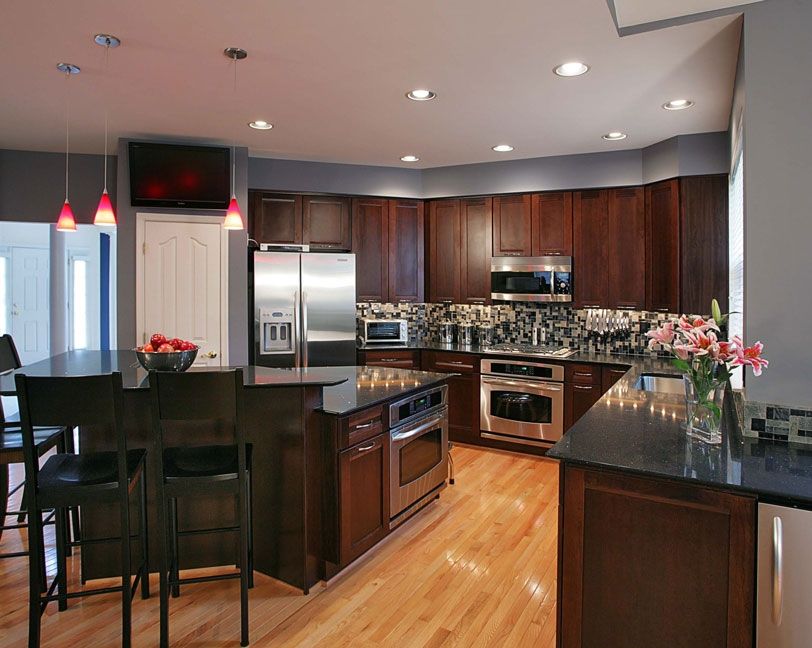
- Cabinetry: 30-40%
- Appliances: 15-20%
- Countertops: 10-15%
- Labor: 20-30%
- Flooring: 5-10%
- Lighting: 5-10%
- Plumbing and Electrical: 5-10%
- Backsplash: 3-5%
These percentages are just estimates and can vary depending on the scope of your renovation, the materials you choose, and your location. Remember to get multiple quotes from contractors and suppliers to ensure you’re getting the best possible prices.
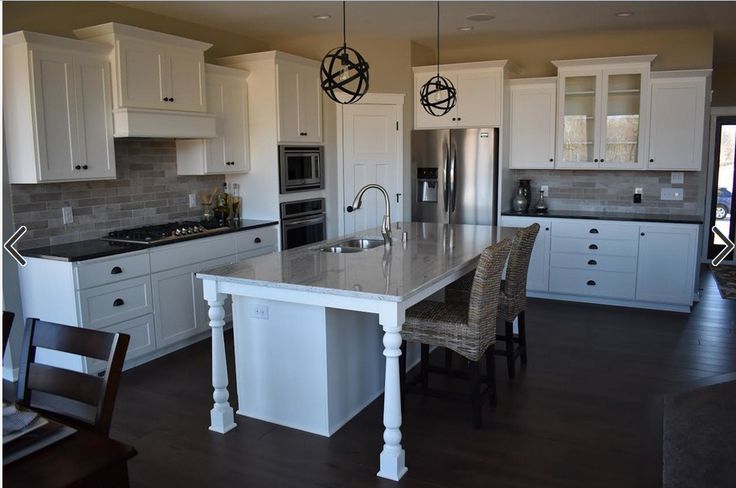
Tips for Saving Money on Your Kitchen Renovation
Renovating a kitchen can be expensive, but there are several ways to save money without sacrificing quality or style:
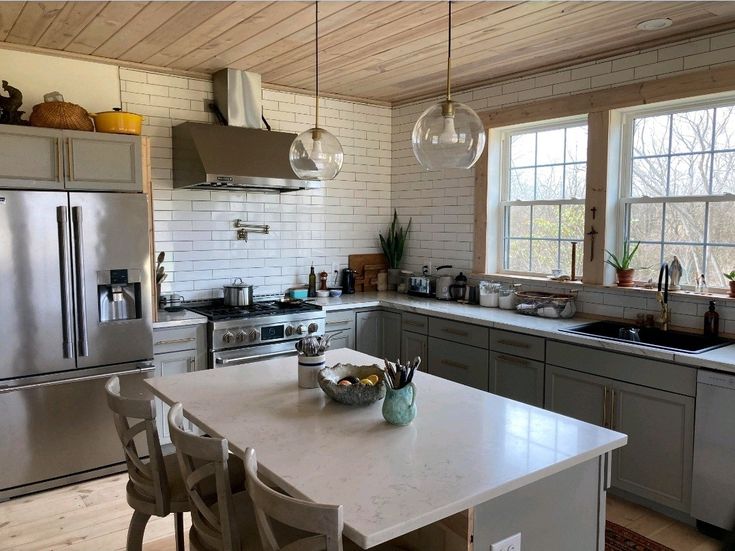
- Keep the existing layout: Moving plumbing and electrical lines can significantly increase the cost of your renovation. Keeping the existing layout will save you money on labor and materials.
- Reface cabinets instead of replacing them: Refacing cabinets is a more affordable alternative to replacing the entire cabinetry.
- Shop around for appliances: Compare prices from different retailers to find the best deals on appliances.
- Consider DIY projects: If you’re handy, you can save money by doing some of the work yourself, such as painting, installing the backsplash, or replacing the cabinet hardware.
- Choose affordable materials: There are many affordable materials that can still look great in your kitchen. Consider options like laminate countertops, vinyl flooring, or stock cabinetry.
- Plan your renovation during the off-season: Contractors may offer discounts during the off-season (typically winter) when they have less work.
Avoiding Common Kitchen Renovation Mistakes
Kitchen renovations can be complex projects, and it’s easy to make mistakes. Here are some common mistakes to avoid:
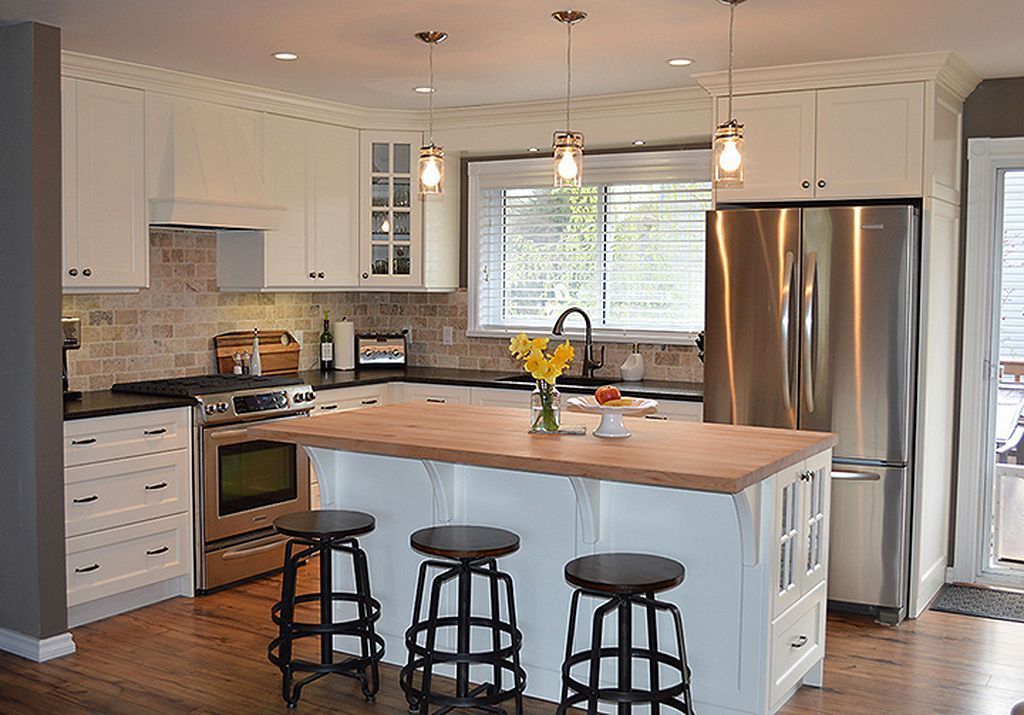
- Not planning properly: Failing to plan properly can lead to costly mistakes and delays. Be sure to create a detailed plan before starting your renovation.
- Underestimating the budget: Underestimating the budget is a common mistake that can lead to financial stress. Be sure to factor in unexpected costs and create a contingency fund.
- Choosing style over function: While it’s important to create a beautiful kitchen, it’s also important to ensure that it’s functional. Choose materials and appliances that are durable and easy to use.
- Not hiring qualified professionals: Hiring unqualified professionals can lead to poor workmanship and costly repairs. Be sure to hire qualified designers and contractors who have experience with kitchen renovations.
- Ignoring building codes: Ignoring building codes can lead to legal problems and safety hazards. Be sure to obtain the necessary permits and follow all building codes.
The Future of Kitchen Design: Emerging Trends
Kitchen design is constantly evolving. Here are some emerging trends to watch out for:
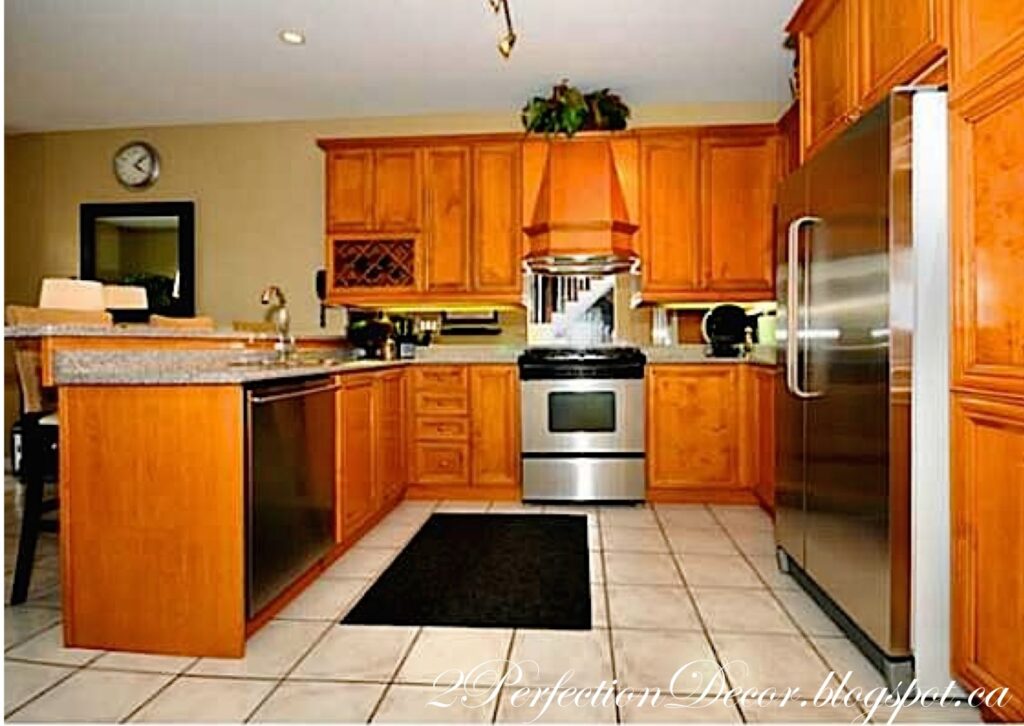
- Smart kitchens: Smart kitchens are becoming increasingly popular, with features like smart appliances, voice control, and automated lighting.
- Sustainable materials: Sustainable materials, such as bamboo, reclaimed wood, and recycled glass, are becoming more common in kitchen design.
- Bold colors and patterns: Bold colors and patterns are making a comeback in kitchen design.
- Multifunctional spaces: Kitchens are increasingly being designed as multifunctional spaces that can be used for cooking, dining, entertaining, and working.
- Outdoor kitchens: Outdoor kitchens are becoming more popular, allowing homeowners to extend their living space and enjoy the outdoors.
Conclusion: Creating the Kitchen of Your Dreams
A kitchen renovation is a significant investment, but it can also be a rewarding one. By carefully planning your project, choosing the right materials and appliances, and hiring qualified professionals, you can create the kitchen of your dreams – a space that is both beautiful and functional, and that will enhance your life for years to come. Don’t be afraid to experiment with different styles, materials, and layouts to create a kitchen that is uniquely yours. Embrace the process, and enjoy the journey of transforming your kitchen into the heart of your home.
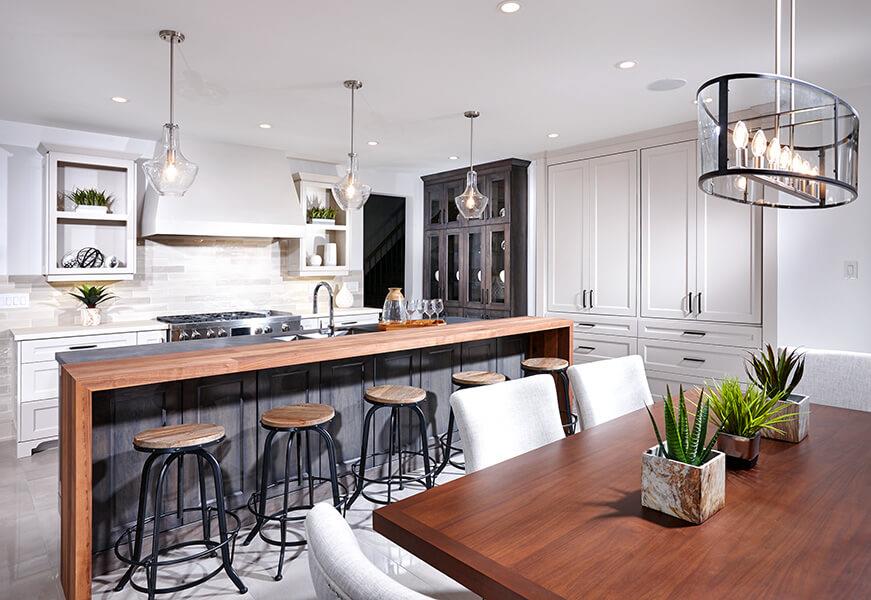
 Nimila
Nimila


